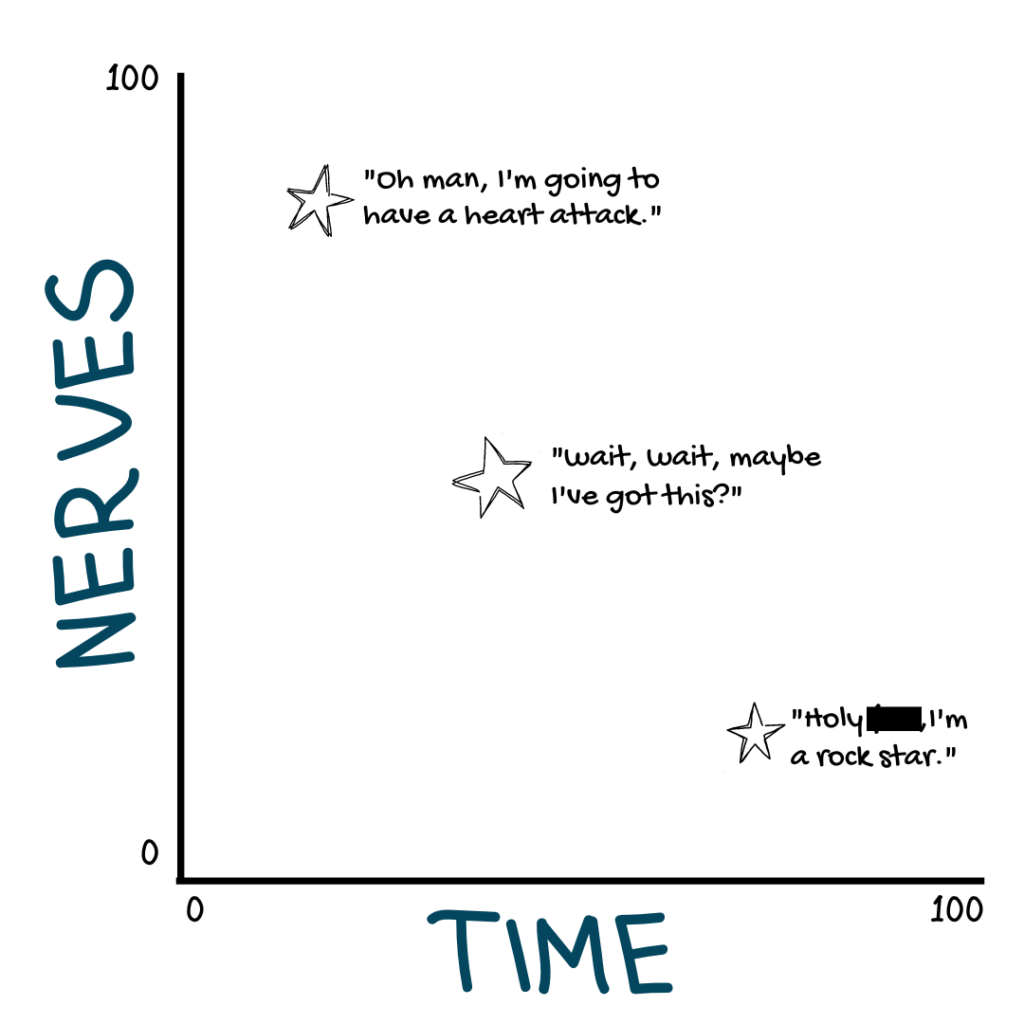Do you get nervous before a big presentation?
If you’re like me, you do–but as someone who’s also built a career on coaching large groups of people, I’ve had to get real comfortable with that anxiety. In fact, I had to figure out a way to reduce it.
Recently, I was asked to speak in front of 650 financial advisors. Though I’d done similar presentations dozens of times, I was still nervous.
My anxiety spiked as attendees told me how thrilled they were to have me at the event and that they “couldn’t wait” to hear me speak.
As the group kept raising that imaginary bar and my perception of their expectations, my imposter syndrome showed up in a big way. (I’m sure there are more than a few of you who can relate!)
All I kept thinking was, “Oh Christine, you better not screw this up.”
Mid-panic, I sent a note to a close friend and her response was, “Channel your inner Oprah.”
For some reason, this comment made me giggle and started to lighten the heavy weight of my heart beating in my chest. I took a deep breath and got ready to march on stage with the same confidence as Oprah; a woman who has so many years of experience, she can’t even mess things up on a bad day.
Spoiler alert: I didn’t screw it up. But I believe that’s because I’ve learned to prepare for these moments. I didn’t let my imposter syndrome rattle me, because I was ready for it.
It’s these scenarios that helped me discover the deep connection between nervousness and time.
Let’s talk through some examples:
If you’re asked to give a 90-minute presentation, I’d bet your response is something like “Oh my, 90 minutes?!” And that immediately leads to anxiety.
If someone asks you to give a five-minute speech in front of 2,000 people, you’d also get hit with that same sense of panic. Of course, you’re likely thinking about what you’re going to say? How are you going to fill the time? Do you need slides? What will they look like?
The levels of anxiety are likely very similar. Which is interesting since the ask is incredibly different.
Over the years, I’ve discovered that nervousness is a function of time. If you think back on any presentation or speech you’ve given in your life, be it in grade school or as a professional, the beginning is always the most nerve-wracking. Your heart rate may spike, your palms may get sweaty, your voice may shake, but the key is just to get through that initial nervousness.

There’s another benefit to this approach.
When you mess up the beginning of a presentation or speech, whether that’s five seconds or five minutes in, it can rattle you. So much so, that it can throw off everything else you’ve planned.
Instead of focusing on what’s in front of you, or what you’ve spent hours/days/weeks preparing, you’re focusing on what you messed up and how you can “catch up” or “make up for it.”
This benefits no one, and it certainly doesn’t add any value to what you’re presenting.
And therein lies my secret: Focus on the beginning and the end of any speech or presentation when you’re preparing. Be intense and intentional about it, and make sure you get these two sections right. These are the two segments that are mission critical to how you feel during and after. And what your audience takes away from what you’ve said.
That’s not saying the middle doesn’t matter, but it’s not necessarily what people will remember. The beginning grabs their attention. The end leaves them with a recap of your time on stage.
If you acknowledge that the beginning is when you’ll feel the most nervous, that intense preparation will help calm your anxiety. Your heart rate will slow, your palms will dry, you’ll see nods in the audience and be reminded that you know what you’re talking about, and you can nail the rest of what you have planned.
The end is the takeaway. Leave them with an “aha moment” and you’ve done your job well (and will most definitely be invited back).
Have you tried this method of preparation? Do you have any other secrets? Join me on LinkedIn and let’s talk about it.